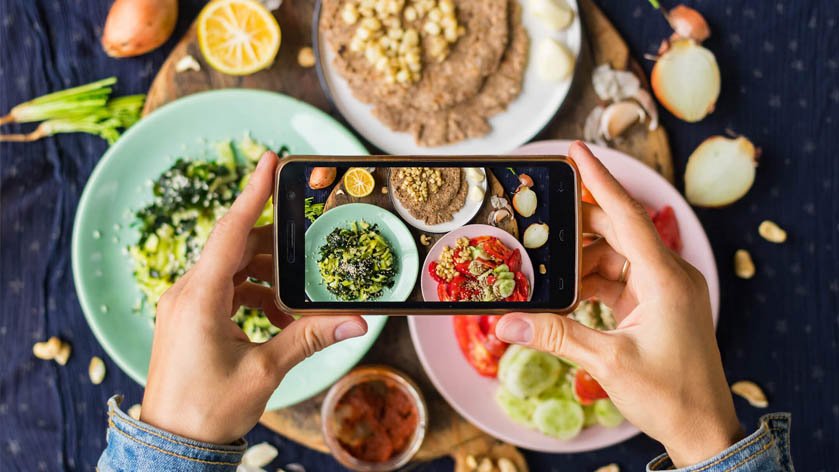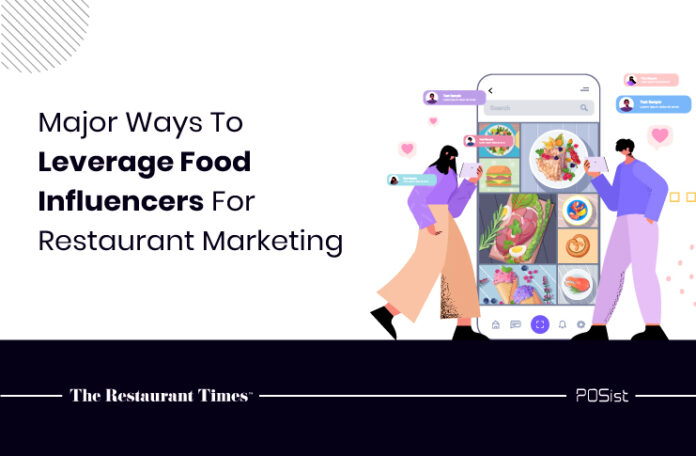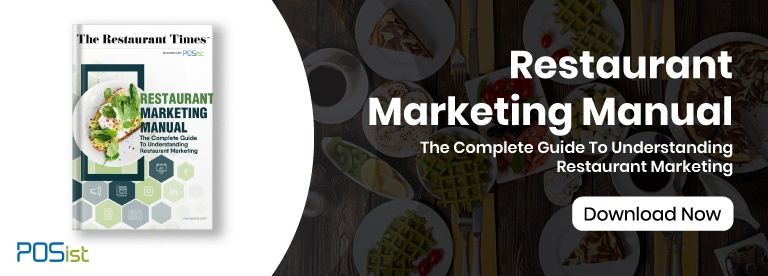Since the inception of social media, food has often been a trending topic. This is fantastic news for the food business, as recipes, kitchen techniques and trivia can now be easily shared with a genuine voice. It does, however, mean that sticking out from the crowd can be difficult. When it comes to generating exposure for your food business, there are numerous social media platforms and Influencer Marketing activation options to explore. It’s critical to maximize your food influencers’ marketing campaign’s return on investment (ROI) by taking advantage of both underutilized activations and newly collected data after your campaign concludes.
Influencer marketing is the concept of collaborating with content creators, such as those with large audiences on social media platforms such as Facebook, Twitter, Pinterest, YouTube, Instagram, and others, to help consumers satisfy their insatiable appetite for stories and reviews about the products they buy. Brands and agencies are pouring millions of dollars into the burgeoning industry in search of solutions that will help them expand the creation and distribution of consumer content.
Food Influencing 101: How To Leverage Food Influencers
Online information and social discussions have a huge impact on how customers choose what to buy and when. While brand-crafted messaging is important, customers prefer recommendations from individuals they know and trust. Third-party experts and their ‘exclusive’ content are often seen as being more trustworthy than advertising or brand websites’ content.
Choose The Right Food Influencers For The Right Brand
If you do an online search for the best influencer marketing initiatives, you’ll find a disproportionately large amount of consumer food brands on the rankings. Food brands such as Kraft, Whole Foods, Horizon Organics, Coca-Cola, Black Box Wines, and hundreds of others are seeing significant increases in awareness, customer engagement, and sales as a result of using bloggers and vloggers on social media. Marketers are starting to realize that leveraging third-party influencers may help them get the most out of their online marketing efforts.
However, selecting the correct food influencers for a program remains a struggle for many industry professionals. Pay attention to folks who post high-quality information on a regular basis. That is, they create genuine content that connects with their audience, sparks conversation, and is shared across social media platforms. Personal charisma alone can not always reflect the reach of an influencer’s brand; rather regular content creation on brand-relevant real-life issues is a stronger indicator of their popularity.
Choose The Right Strategies
One of the advantages enjoyed by the food sector is that people love talking about, tweeting about, pinning about, collecting, tasting, and sharing food recipes and experiences. Quite a bit. For example, consumers can often be seen planning dinner and scouring Pinterest and blogs for ideas as soon as they tweet what they had for breakfast. Visual banners can be visceral, motivating, engaging, and deliciously shareable. Rich content, such as photos, videos, and infographics, generates greater engagement and click conversions than plain text. Content that delivers value to the target consumer works best with influencer marketing strategies. Instead of being solely about the brand, it should be genuine and thought-provoking, with subtle brand connections. Marketers must shift their focus away from telling customers how fantastic their products are and instead focus on the customer, their experiences, and their pleasure.
Consumers enjoy content that makes them laugh, cry, or learn something new, and the best source of such content is frequently another consumer. People love talking about recipes, restaurants, bargains, entertainment, and so on, therefore the food sector benefits greatly from this strategy.

How Exactly Can Food Influencers Help?
Concentrate on one social media platform that best matches your brand and use your favourite blogger to target your audience. Keep in mind that in the food industry, word of mouth plays a critical role in determining success. If you’ve spent time getting to know your target audience, a quick look at an influencer’s feed can tell you whether or not he or she is a good fit for your brand’s voice, image, and so on. You want someone who you can readily envision using your product or service. For example, a local fashion YouTuber is probably not the ideal match for your organic ice cream. The post would stand out and scream sponsored promotion, defeating the goal of influencer marketing.
1. Connect With Audience
Connection is at the heart of influencer marketing methods. Establish a relationship with influencers before approaching them to inquire if they’d want to highlight your product. Follow them on social media, watch who they communicate with and how they interact with them, and share some of their postings. Once you’ve made a connection with them, ask if they’d want to feature your product.
2. Instil Creativity
Allow influencers the freedom they need in creating content for your product, once you’ve got them on board. When marketers have heavy involvement in this area, the messaging can come across as deceptive. Allow influencers to do what they do best when it comes to engaging with their audience in their own unique way.
3. Keep Track Of Your Accomplishments And Setbacks
It can take time to find the appropriate message on the right channel to resonate with the right target, just like any other marketing campaign. If you don’t see the expected results immediately away, don’t abandon your influencer marketing plan. As you become more comfortable with the area, keep an eye on it and make adjustments.
4. Track And Observe
The true challenge with analytics is ensuring that they are matched with what counts most: consumer expectations. There is no single number that can convey enough information. Instead, metrics should be measured according to the stages of the consumer’s decision-making process: awareness, consideration, preference, purchase, and loyalty. The first step is evaluating multiple behaviours based on the exact stage of the buyer’s journey. Some triggers to watch for included opt-ins for your social media updates and email marketing or if they like, follow, or provide an email address. Social listening can be used to identify whether or not your brand has a positive image. Contest submissions or confirmation that a viewer has tried a product (for example, through a recipe) demonstrate a level of interest in your business. Clicks indicate that your audience is interested in learning more. A sweepstakes entry or vote indicates that they have given enough thought to the topic to provide their personal information. Brand studies can be used to ask audience members things such as purchasing intent. It is possible to extract sentiment from a comment that demonstrates consideration.
In the End
Choosing which meals to eat at an all-you-can-eat buffet is similar to developing an influencer marketing plan for your food business. There’s a lot to select from, but there’s only so much time to accomplish it all. This is why you should use the methods described above to create the best food brand strategy. This ensures the success of your campaign, allowing you to raise brand awareness, if not sales and revenue. It’s not always simple for a food brand to stand out on social media. Take advantage of influencer activations that haven’t been overrun by competition. You will be able to break through the clutter and rise above the crowd by doing so. Incorporate ideas like videos, real-time interaction, sampling, and challenges into your influencer campaign approach.
Read similar article: Launch A Profitable Restaurant Marketing Campaign With Food Influencers


















